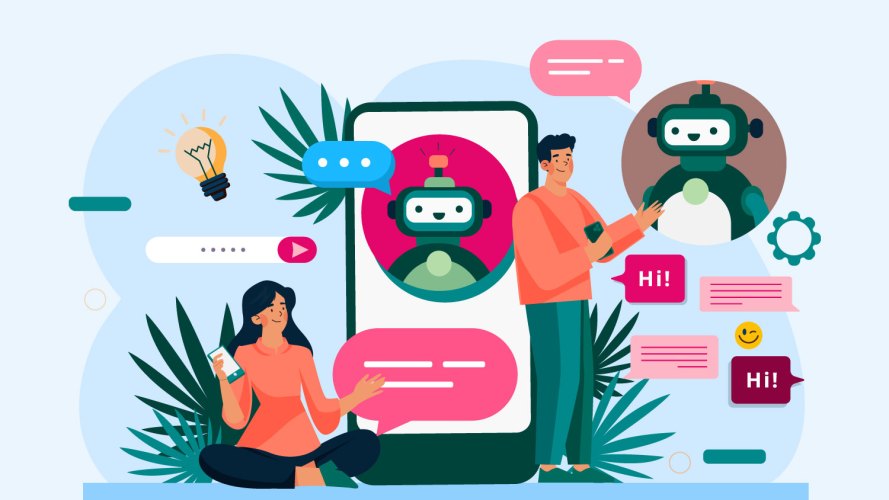4 Ways To Rethink Your Customer Service Model for Fast, Quality Support



Contact centers had high turnover even before the Great Resignation. Help agents work together better by rethinking your approach to customer support.

Clara Shih
Today’s customers expect fast, personalized service — and thanks to leaps forward in technology, delivering it is now possible. But to equip contact centers to provide the best customer experience, companies must address two major challenges: rapid digital transformation in customer service, and the crisis of talent known as the Great Resignation or Great Attrition.
So far, many companies are doing well on the technological front. It’s incredible how many have adopted digital approaches that streamline customer service over the past two years. “More organizations are combining human, AI-enabled, and digital customer support across all of their channels,” reports McKinsey & Co., “a change that 67% of surveyed executives expect to stick post-pandemic.”
A well-run contact center is a competitive advantage in the fight for customer loyalty. Seventy-one percent of customers have made purchase decisions based on the quality of customer service, according to Salesforce’s “State of the Connected Customer” report. Companies with a loyal customer base grow revenue more than twice as fast as their industry peers, Bain research shows.
But contact centers have high turnover rates, and the Great Resignation may be exacerbating this long-standing trend. As a result, service leaders may find their teams suffering from knowledge gaps more than ever. So how do you overcome this problem, to offer top-notch, personalized service — fast?
One answer is to help your teams work together more nimbly and collaboratively. Here are four ways to rethink your customer support model for greater ease in agent training, faster service for your customers, and ultimately greater loyalty and business growth.
Send strategic cases to your people and deflect the easy ones
It used to be that support agents handled every customer request — from the mundane to the mind-boggling — one at a time, typically on the phone. That model no longer makes sense.
Now automation, machine learning, and artificial intelligence empower companies to send the easy cases to self-service portals or bots. Over time, more and more cases get deflected.
As a result, fewer cases reach your support agents. But the ones that do are more complex and time-consuming to solve. So your team needs more training, support, and skills to weather the cognitive and emotional load of tackling multiple difficult cases in succession.
Yet, despite adding self-service channels to their mix, many organizations haven’t changed their support models to match the new reality. Instead, they’re trapped in a traditional, tiered customer support model, with agents pretty much on their own as they attempt to solve complex issues.
Sure, support teams can seek help in the company’s knowledge base or ask a colleague — but that doesn’t help agents move fast. When they reach a dead end, support reps typically escalate to the next-tiered agent or a different department, and the poor customer has to start all over.
This isn’t the way to do it.
Make service a team effort and training opportunity
Remote and hybrid work has made it harder for contact center agents to train and upskill, because they can no longer raise a hand for a supervisor’s attention when they need help. So why not work in a smarter, more modern way?
I suggest case swarming — a collaborative approach to customer service. With case swarming, experts across the service organization, or other departments, work together to more quickly solve the customer’s problem.
A swarm might involve people from finance, legal, operations, sales, engineering, or DevOps — it all depends on what problem needs to be solved. Experts share resources and knowledge, and after the case is closed the support team documents everything for future reference.
Swarming significantly improves the customer experience, because the first agent the customer speaks to stays the single point of contact as the broader team works behind the scenes. Agents quickly gain new skills, new team members are integrated and upleveled faster, and the customer no longer experiences the frustrating, painful process of getting passed from one agent to the next. Win-win.
Think of internal and external partners as your extended service team
Case swarming is a useful model not only for helping individual customers, but also when problems affect a wide swath of your customer base — such as during a power or network outage. When this happens, customer-facing teams need to be connected with your company’s operations and incident management teams, so that everyone is informed. You can do all this in Slack — we do here at Salesforce.
But it’s not just your internal teams who should be involved in swarming — key external partners are just as important. Let’s say a B2B customer contacts your coffee company about products that have been reported as delivered, but in fact have not arrived. You need to bring in partners to your swarm to help. Slack Connect helps you do that.
You can even offer high-touch, personalized support to your most important customers through their own personalized swarm — talk about white-glove service.
Use artificial intelligence to lighten the load
We already touched on how AI and self-service solutions help deflect the easy cases. But AI is also useful for uplevelling the experience you offer. By acting as a highly intelligent personal assistant, AI makes it easier for agents to solve even the complex cases that do reach their queues.
This starts when the customer first reaches out. AI triages cases, collects data, and confirms the customer’s identity. This creates a more seamless handoff from self-service or chatbot to live agent. By the time a case reaches the agent, they already have a lot of information about that customer’s situation, powering a smoother customer experience. In fact, AI improves both the agent and customer experience throughout the lifecycle of the case.
Today, the best service teams are built with empathetic agents, internal partners who recognize that support is everyone’s job, external partners who pitch in when needed, and AI-powered digital assistants to help all along the way.
With technological change happening so fast, it’s an exciting time to be in the customer service field. It can also feel overwhelming. But with the right approach, there’s great opportunity to improve the experience for your customers — and to turn customer service into a competitive differentiator for your company.
Collaborate better with Case Swarming in Slack
See how to give your customers an all-digital, end-to-end experience they will love with Salesforce and Slack.


























